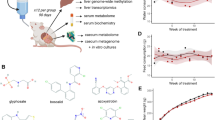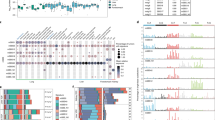Abstract
The rat-liver carcinogen 4-dimethylaminoazobenzene (Butter Yellow, DAB) and 12 of its structural analogues have been evaluated in a cell transformation assay. Eight of these analogues have already been tested for carcinogenicity in rats, whilst the remaining 4 are new or hitherto untested. Benzidine and its 3,3'-disulphonic acid derivative have also been evaluated. The in vitro results agree with long-term animal data for 8 compounds but disagree in finding DAB-4'-sulphonic acid, 4-trifluoromethyl-DAB and 4-diethylaminoazo-benzene positive. Possible reasons for these divergencies are discussed. It is concluded that 9-phenylazojulolidine and N-methyl-5-phenylazoindoline have carcinogenic potential and that 3,5-dimethyl-4-aminoazobenzene and 4-aminoazobenzene-4'-sulphonic acid are likely to prove non-carcinogenic. Addition of azobenzene to the in vitro assay medium increases the transforming potency of DAB 25-fold. It is suggested that it acts as a competitive substrate for one of the enzymes that detoxify DAB, and that this effect is related to that produced by norharman. Sulphonic-acid derivatives of established carcinogens are usually inactive. The basis of this effect has been investigated, and it is suggested that it can operate by two separate mechanisms. It has been established that this assay cannot be relied upon to predict the in vivo potency of a carcinogen. Consideration has been given to possible changes which could be made to the liver activation system (the S-9 mix) currently used in in vitro carcinogenicity assays, and a diagram is presented of the metabolic conversions of a compound which might lead to mutation or tumour formation. This enables the term potential carcinogen to be accurately defined, and indicates a possible difference between absolute non-carcinogens and compounds which fail to produce cancer in vivo.
This is a preview of subscription content, access via your institution
Access options
Subscribe to this journal
Receive 24 print issues and online access
$259.00 per year
only $10.79 per issue
Buy this article
- Purchase on Springer Link
- Instant access to full article PDF
Prices may be subject to local taxes which are calculated during checkout
Similar content being viewed by others
Rights and permissions
About this article
Cite this article
Ashby, J., Styles, J. & Paton, D. In vitro evaluation of some derivatives of the carcinogen butter yellow: implications for environmental screening. Br J Cancer 38, 34–50 (1978). https://doi.org/10.1038/bjc.1978.161
Issue Date:
DOI: https://doi.org/10.1038/bjc.1978.161



